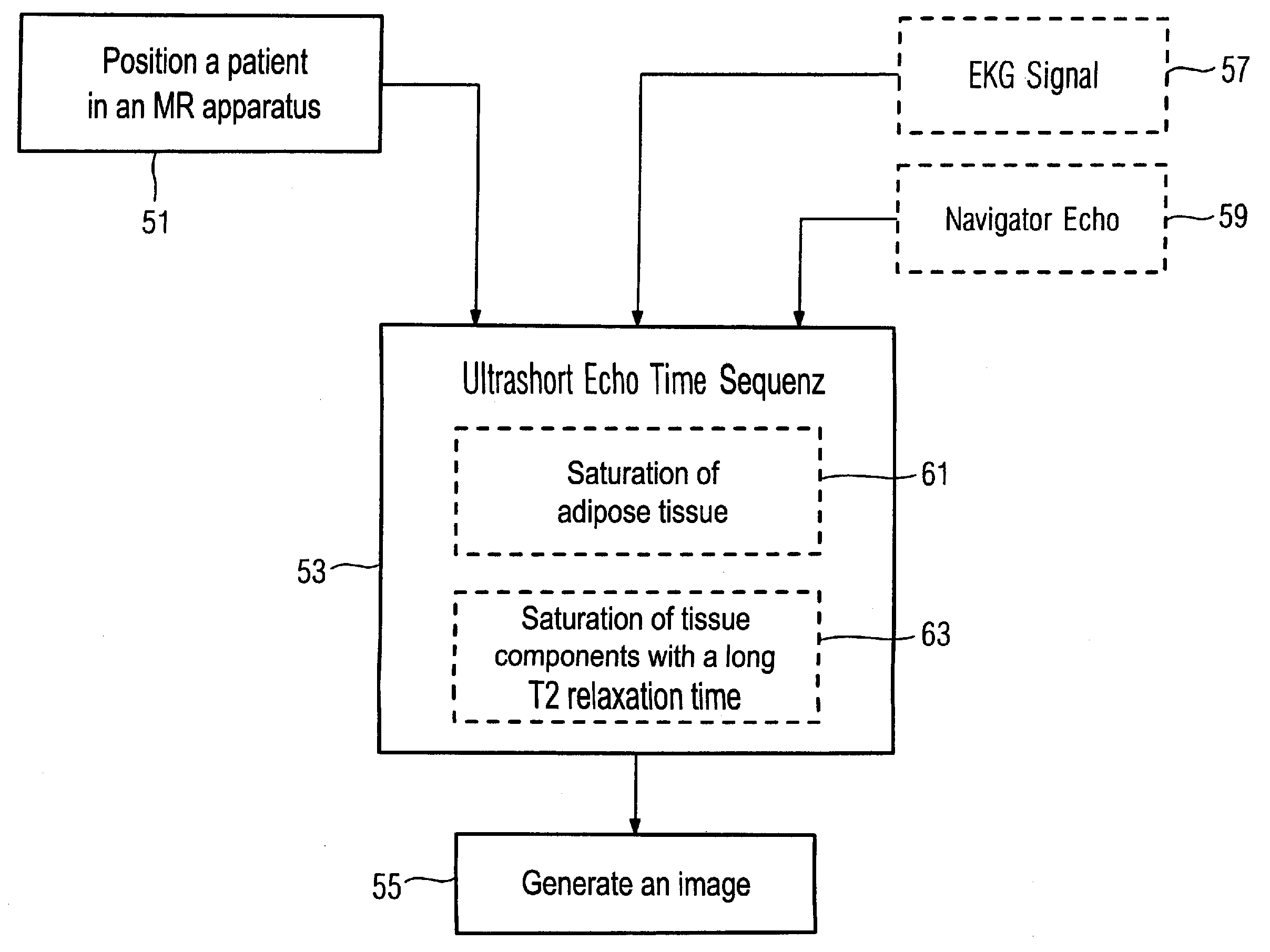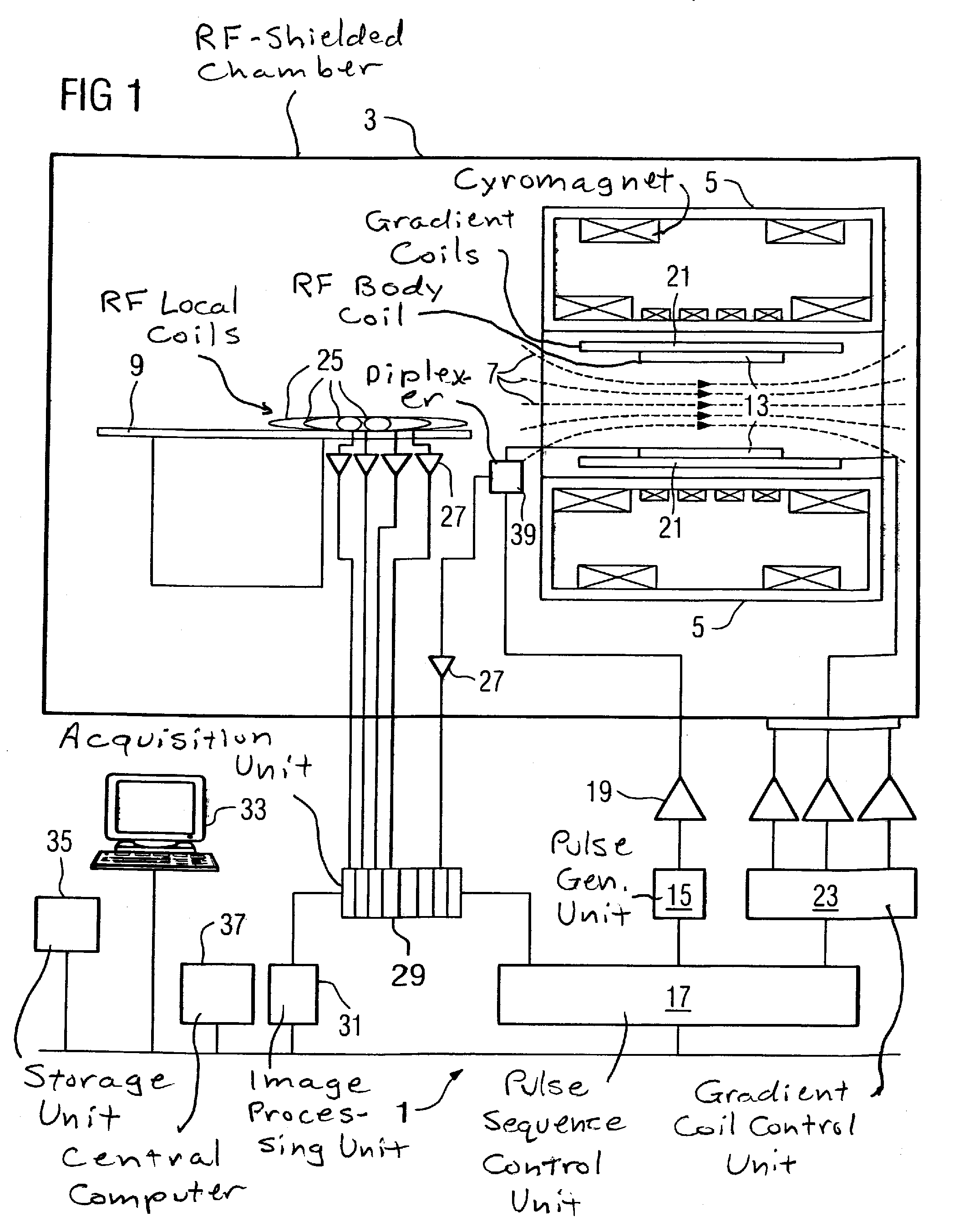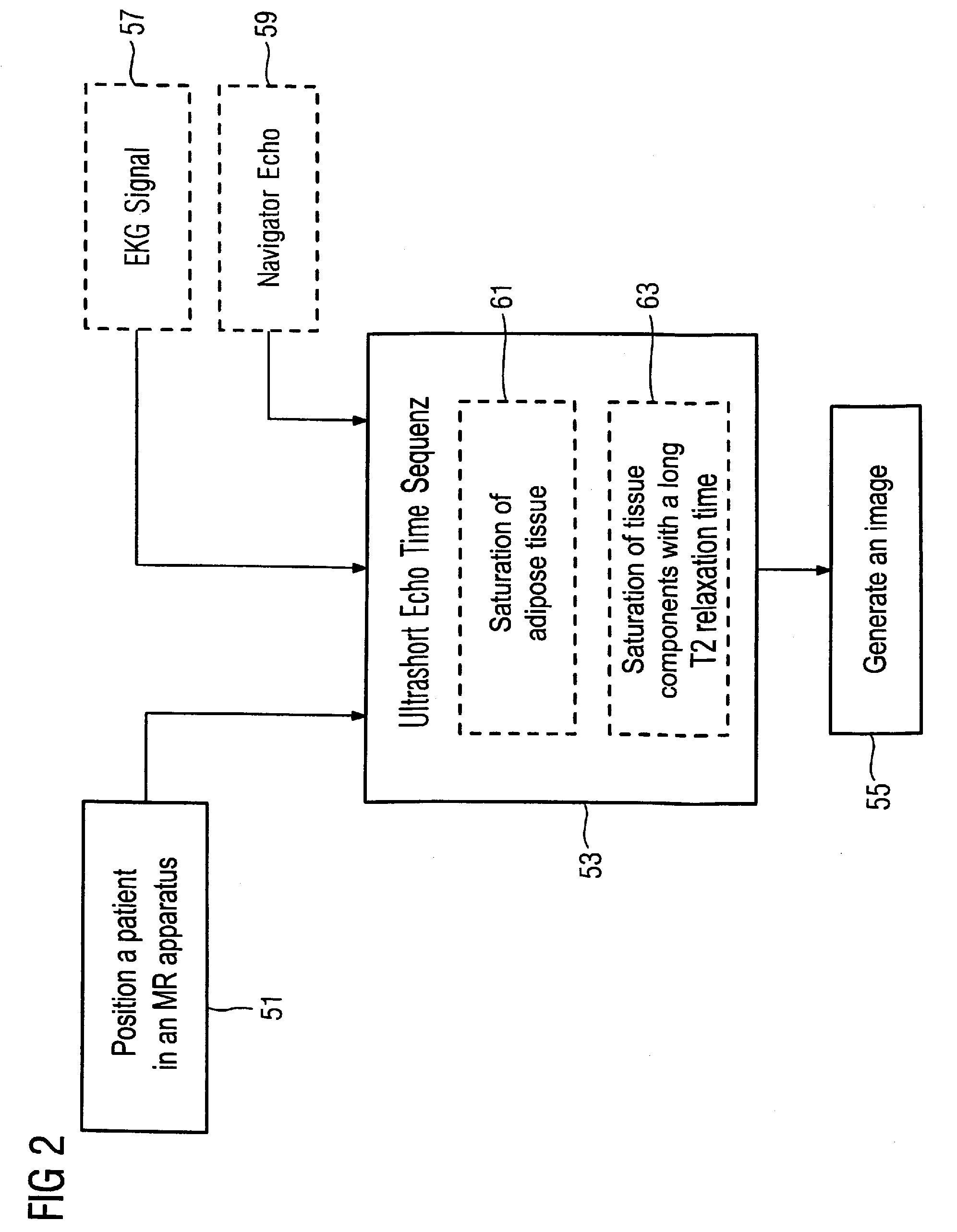Magnetic resonance method and apparatus for acquisition of image data of a vessel wall
a magnetic resonance and image data technology, applied in the field of magnetic resonance method and apparatus for acquisition of image data of vessel walls, can solve the problems of insufficient detection of calcifications and/or calcium deposits in plaques, insufficient evaluation of at-risk patients, and high cost, so as to improve the evaluation of composition and improve the identification of patients.
- Summary
- Abstract
- Description
- Claims
- Application Information
AI Technical Summary
Benefits of technology
Problems solved by technology
Method used
Image
Examples
Embodiment Construction
[0030]FIG. 1 schematically shows the basic design of a magnetic resonance apparatus 1. In order to examine a body by means of magnetic resonance imaging, various magnetic fields matched as precisely as possible to one another in terms of their temporal and spatial characteristics are applied.
[0031]A strong magnet (typically a cryomagnet 5 with a tunnel-shaped opening) arranged in a radio-frequency-shielded measurement chamber 3 generates a static, strong basic magnetic field 7 that is typically 0.2 Tesla to 3 Tesla and more. A body or a body part (not shown) to be examined is surprised on a patient bed 9 and positioned in a homogeneous region of the basic magnetic field 7.
[0032]The excitation of the nuclear spins of the body ensues by radio-frequency excitation pulses that are radiated by a radio-frequency antenna (shown here as a body coil 13). The radio-frequency excitation pulses are generated by a pulse generation unit 15 that is controlled by a pulse sequence control unit 17. A...
PUM
 Login to View More
Login to View More Abstract
Description
Claims
Application Information
 Login to View More
Login to View More - R&D
- Intellectual Property
- Life Sciences
- Materials
- Tech Scout
- Unparalleled Data Quality
- Higher Quality Content
- 60% Fewer Hallucinations
Browse by: Latest US Patents, China's latest patents, Technical Efficacy Thesaurus, Application Domain, Technology Topic, Popular Technical Reports.
© 2025 PatSnap. All rights reserved.Legal|Privacy policy|Modern Slavery Act Transparency Statement|Sitemap|About US| Contact US: help@patsnap.com



